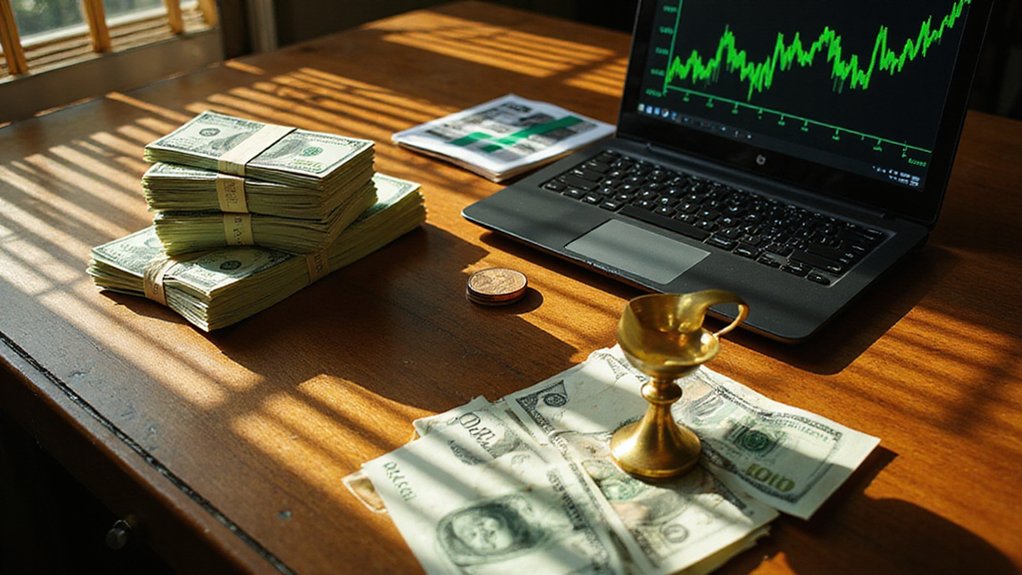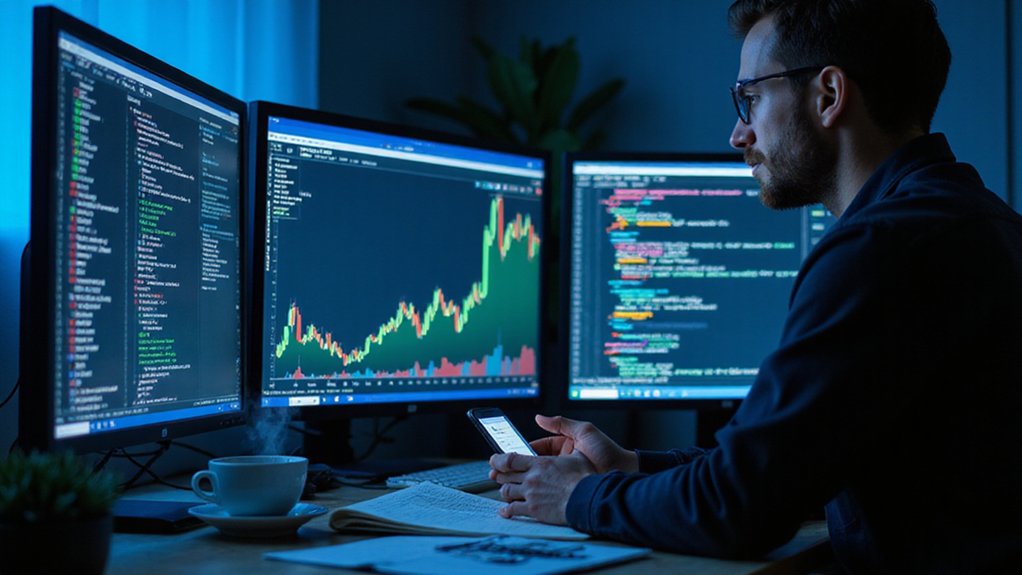How does one reconcile the inherent contradiction of “daring” trading strategies—those approaches that simultaneously promise extraordinary returns while demanding the kind of disciplined risk management that would make a Swiss banker nod approvingly?
The transformation of $6,800 into $1.5 million represents precisely this paradox in action. Such astronomical gains (roughly 22,000% returns, for those keeping score) typically emerge from strategies that conventional wisdom would categorize as reckless gambling rather than prudent investing. Yet the mathematics underlying these outsized returns often rely on the same risk-adjusted metrics—Sharpe ratios, maximum drawdown calculations, and Kelly Criterion applications—that form the bedrock of institutional portfolio management.
The mathematics of extraordinary returns paradoxically employs the same rigorous risk metrics that govern conservative institutional portfolios.
Consider momentum trading combined with aggressive position sizing: a strategy that exploits strong price trends while leveraging psychological market inefficiencies. The “daring” component isn’t merely the willingness to chase rising assets (though buying high and selling higher does require a certain intellectual flexibility). Rather, it’s the systematic amplification of winning positions through calculated risk escalation—increasing bet sizes as profits accumulate, effectively compounding both gains and potential catastrophe.
This approach defies conventional diversification wisdom by concentrating capital in a handful of high-conviction trades. Where traditional portfolio theory suggests spreading risk across multiple uncorrelated assets, momentum-based concentration strategies deliberately court volatility, viewing it as opportunity rather than threat. The psychological resilience required becomes paramount when a single trade might represent 30% of available capital. Successful traders often identify optimal entry points by recognizing bullish engulfing patterns at critical support and resistance levels, where these multi-candle formations provide the highest probability setups.
The overnight risk exposure inherent in such strategies (particularly problematic for swing trading approaches) compounds the psychological pressure. Markets, after all, maintain their charming habit of gap movements during after-hours sessions, potentially obliterating carefully calculated stop-loss levels before they can execute. Algorithmic trading systems can provide exceptional speed in executing trades to exploit short-lived opportunities that human traders might miss during these volatile periods.
Performance measurement in these extreme scenarios transcends simple return calculations. The risk-to-reward optimization must account for the exponential growth potential of successful momentum trades while acknowledging that drawdowns approaching 50-70% represent occupational hazards rather than strategic failures. These strategies undergo rigorous backtesting to validate their effectiveness across different market conditions before implementation.
Ultimately, the “daring” element lies not in abandoning risk management principles but in their extreme application—using sophisticated position sizing algorithms and trend-following systems to amplify returns while maintaining strict disciplinary frameworks that most retail traders would find psychologically unbearable.





